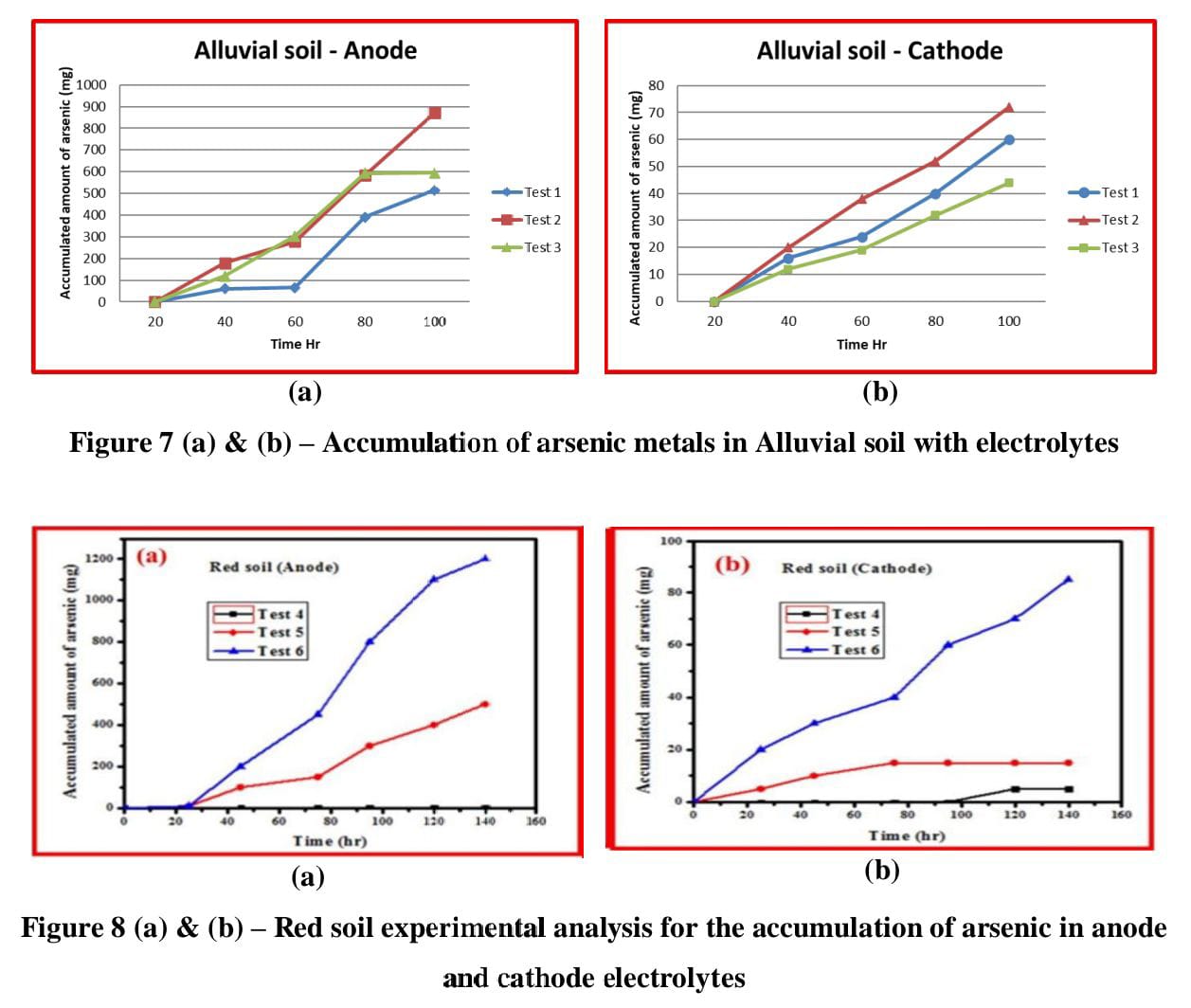
In this research the arsenic contaminations issues are exposed and suitable measures are recommended through electrokinetic remediation. The arsenic expulsion was assessed using the electro kinetic remediation from two different soil tests; alluvial clay soil and red clay soil taken from the Tamilnadu zone. Three distinct cathodic electrolytes—deionized water (DIW), potassium phosphate (KH2PO4), and sodium hydroxide—were used to test the viability of upgrading experts (NaOH).The consequences of the examinations on the alluvial mud soil shows that the potassium phosphate (0.1N) was the best in extricating arsenic (79.5% removal efficiency), likely because of anion trade of arsenic species by phosphate. Then again, the sodium hydroxide (0.1N) appeared to be the most proficient in with eliminating arsenic (63%) from the red soil. The sodium hydroxide's ability to increase soil pH and hasten the ionic migration of arsenic species through the desorption of arsenic species as well as the disintegration of arsenic-bearing minerals may help to explain and suggest this result. In order to forecast the effectiveness of removing arsenic from polluted soil, studies using response surface technique are also designed using the Box Behnken Method.
Total file downloads: 9